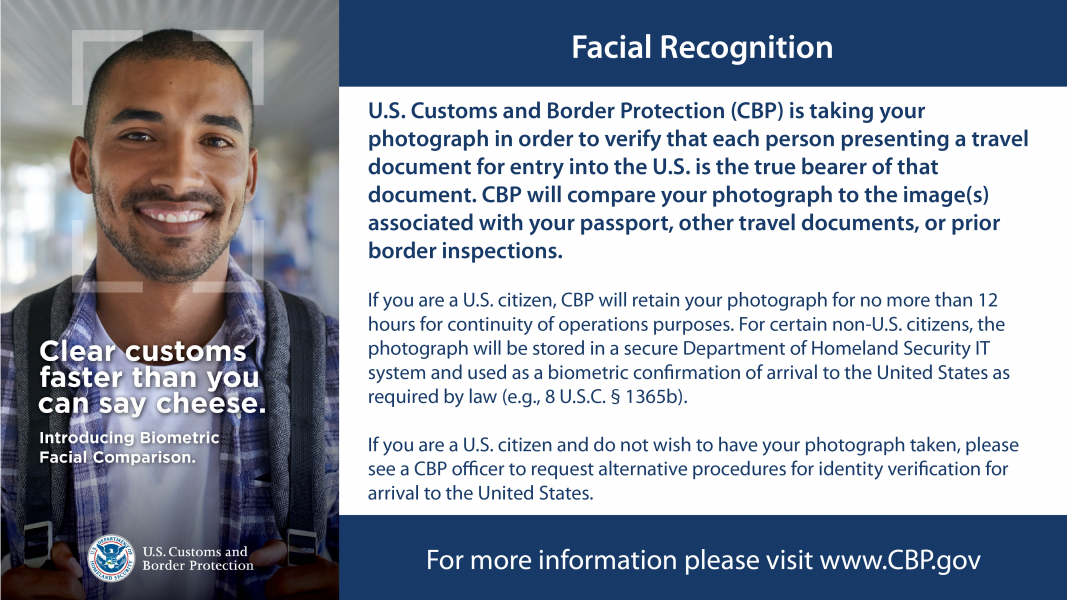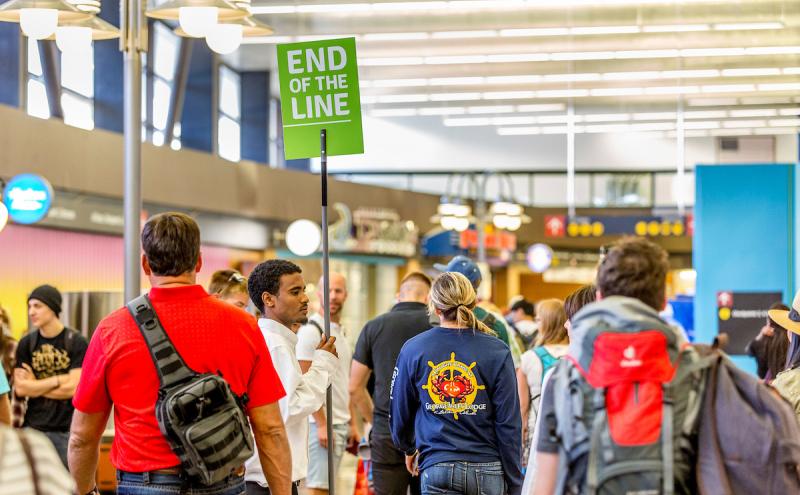Since early 2020, U.S. Customs and Border Protection (CBP) has utilized facial recognition technology to confirm the identity of a limited number of international travelers departing from Seattle-Tacoma International Airport (SEA). In the coming months, CBP will begin to use this technology to confirm the identities of international passengers arriving in SEA as well, while facial recognition processing of departing international passengers will expand to almost all flights. If you have any questions about facial recognition at SEA please contact CBP at 206-214-2200.
Facial recognition processing is voluntary for almost all SEA travelers! You have the option to opt-out, and here’s more information that will help you make your decision:
Full Signage Notice
U.S. Customs and Border Protection (CBP) is taking your photograph in order to verify that each person presenting a travel document for entry into the U.S. is the true bearer of that document. CBP will compare your photograph to the image(s) associated with your passport, other travel documents, or prior border inspections.
If you are a U.S. citizen, CBP will retain your photograph for no more than 12 hours for continuity of operations purposes. For certain non-U.S. citizens, the photograph will be stored in a secure Department of Homeland Security IT system and used as a biometric confirmation of arrival to the United States as required by law (e.g., 8 U.S.C. § 1365b).
If you are a U.S. citizen and do not wish to have your photograph taken, please see a CBP officer to request alternative procedures for identity verification for arrival to the United States.



